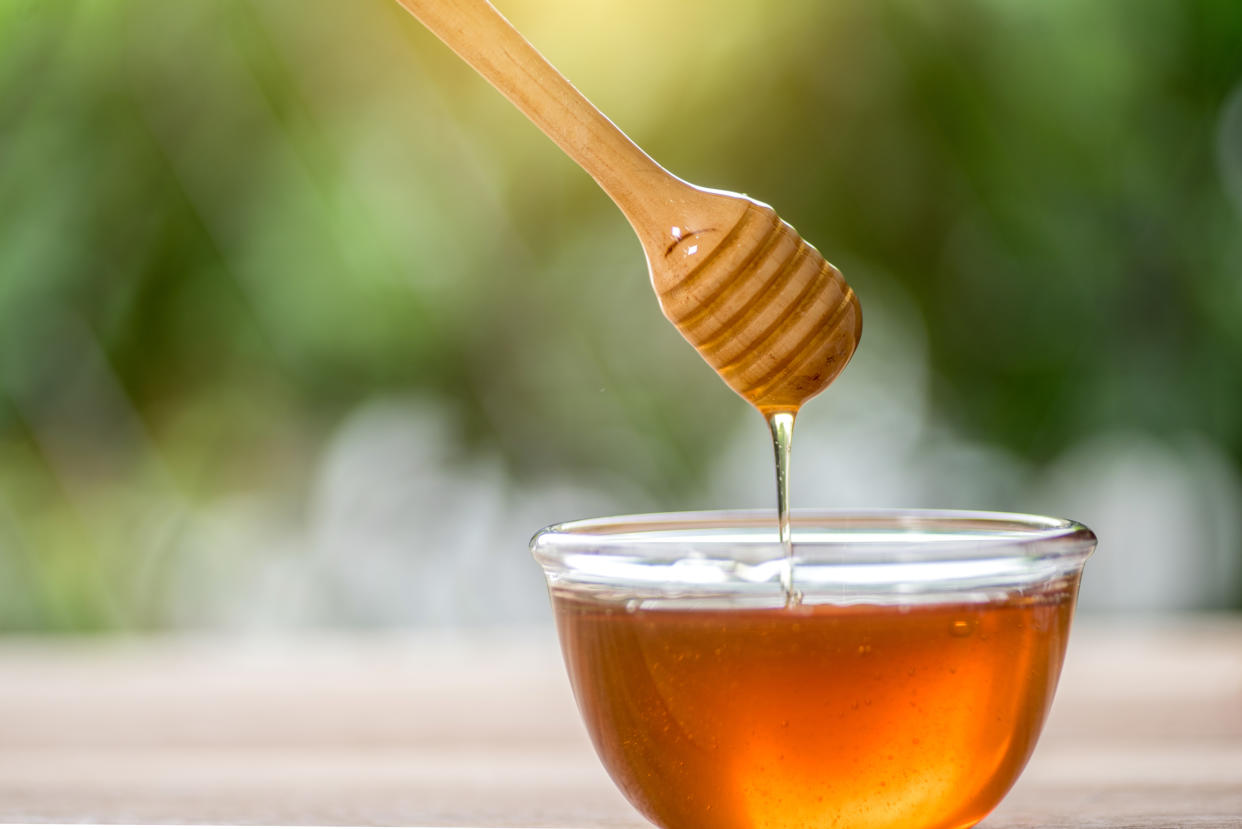Honey 'dressings' could ward off infections after an operation

Honey “dressings” may ward off infections after an operation, research suggests.
The antibacterial properties of the natural sweetener have been known for thousands of years.
READ MORE: Tesco £1 honey is 'bulked out with sugar'
With antibiotic resistance on the rise, scientists from Newcastle University set about determining whether honey could stop bacteria taking hold.
Surgical meshes are often implanted into the body following surgery to support weakened or damaged tissue.
Although effective, they raise the risk of infections, with bacteria forming a “film” on the surface of the mesh.
“Once the bacteria form a biofilm on the surface, it's very difficult to treat the infection,” lead author Dr Piergiorgio Gentile said.
To combat this, the scientists alternated eight “nano layers” of medical-grade Manuka honey with polymers.
Manuka honey has a negative charge, while polymers are positive. Together, these created an “electrostatic nanocoating” on the mesh that inhibited the growth of bacteria.
“By sandwiching the honey in a multilayer coating on the mesh surface and slowly releasing it, the aim is to inhibit the growth of the bacteria and stop the infection before it even starts,” Dr Gentile said.
Creating the correctly sized layers was critical, with each ending up being just 10-to-20 nanometres (between 0.00001 and 0.00002mm) thick.
READ MORE: What is antibiotic resistance - and when will it strike?
“Too little honey and it won't be enough to fight the infection but too much honey can kill the cells,” Dr Gentile said.
The scientists tested the mesh on different soft tissue cell samples in the laboratory, which were exposed to common bacterial infections, like MRSA and E.coli.
Soft tissue infections are common, with bacterial ones making up around 10% of hospital admissions.
Results, published in the journal Frontiers, suggest the mesh warded off the pathogens for up to three weeks.
"These results are really very exciting,” Dr Gentile said. “By creating this 16-layered 'charged sandwich' we were able to make sure the honey was released in a controlled way over two to three weeks, which should give the wound time to heal free of infection
“Honey has been used to treat infected wounds for thousands of years but this is the first time it has been shown to be effective at fighting infection in cells from inside the body.”
READ MORE: Bacteria can change shape inside humans to avoid antibiotics
All honey is thought to be antibacterial to some extent due to it containing chemicals that release hydrogen peroxide. This destroys bacteria’s cell walls and has been used as an antiseptic since the 1920s, Live Science reported.
A 1991 study removed hydrogen peroxide from different types of honey, with only Manuka maintaining its bacterial-killing properties. Produced in New Zealand, it is made from the nectar of bees that forage on wild Manuka trees.
Manuka’s “special” properties were put down to a uniquely antibacterial ingredient called methylglyoxal.
The Newcastle scientists hope their study will lead to the development of a mesh that could one day ward off infections. This is particularly timely given the ongoing threat of antibiotic resistance.
This occurs when bacteria no longer respond to the once life-saving drugs.
The World Health Organization calls it “one of the biggest threats to global health”, with no one being immune to the crisis.
It has been blamed on the misuse of antibiotics, for instance, doctors doling them out unnecessarily.
Antibiotics are unlike many other drugs in that the more they are used, the less effective they become.
Random mutations take place within bacteria at a rapid rate. Exposure to an antibiotic “selects” for mutations that protect the bug, including “good ones” in our gut, from destruction.
Bacteria can then pass this genetic advantage to future generations or “horizontally” to other bugs.


